Landscaping for Pollinators
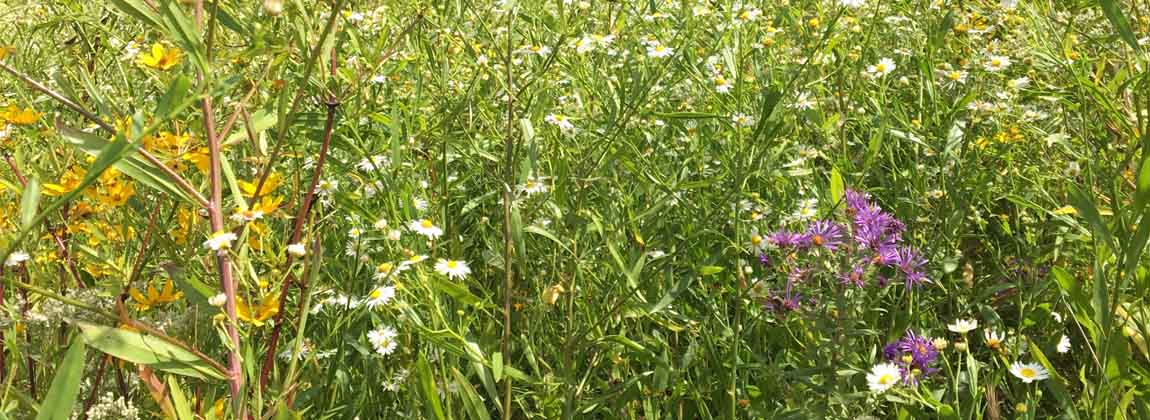
This is the second post in a two-part environmental series from Polk County Conservation on both pollination and landscaping. Read the first post, “What’s the Buzz? Discovering Pollinators in DSM,” here.
Welcome to part two of the pollinator blog, written by your friendly neighborhood Naturalist, Lindsey! I am extremely passionate about sharing my love for the plants that have called Iowa home for centuries and encouraging anyone who will listen to let part of their yard turn into a prairie. In part one, we learned about different pollinator species in Greater Des Moines (DSM) and why they are so important. In this piece, we will dive deeper into how to attract bees, birds and butterflies to your next landscaping project.
Incorporating native plants into your landscape offers a wealth of ecological and aesthetic benefits. Iowa’s native plants are particularly well-adaptable to thrive in our fluctuating climate. By planting native plants, you can not only attract pollinators, but also improve soil and water quality, prevent erosion, enhance the beauty of your property and promote biodiversity. Here’s an in-depth look at how you can transform your landscape with these resilient and beneficial plants.
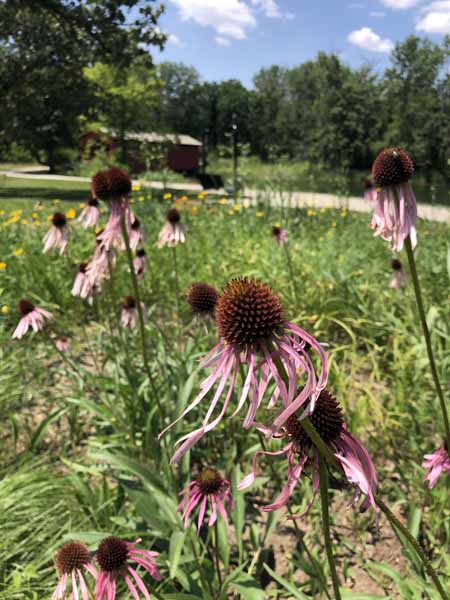
Attracting Pollinators – What Do I Plant?
When it comes to selecting native plants for your landscaping projects, there are several species that stand out for their beauty, sturdiness and ecological benefits. Here are some of my top choices:
-
Pale Purple Coneflower: Known for its striking purple flowers and ability to attract a variety of pollinators, this plant thrives in full sun and well-drained soils. It’s perfect for garden borders and prairie plantings.
-
Butterfly Milkweed: Essential for the survival of monarch butterflies, this vibrant orange-flowering plant prefers sunny locations, ideal for a pollinator garden.
-
Wild Bergamot: With its lavender blooms and minty fragrance, this plant is a magnet for several different species of bee. It grows well in sunny or partially shaded areas with average soil moisture.
-
Black-Eyed Susan: This cheerful, yellow-flowering perennial is easy to grow and attracts a variety of pollinators. It thrives in full sun and well-drained soil.
-
Common Milkweed: A different milkweed species that hosts pinkish-purple blooms that smell as beautiful as they look in the summer.
-
Serviceberry: A multi-stemmed shrub or small tree that produces white spring flowers and small berries, which attract birds. It can be planted in full sun or partial shade and adapts to a range of soil conditions.
Where Do I Buy Native Plants?
Finding a reliable source for native plants is crucial to ensure their quality and sustainability in your landscape. In addition to the resources shared in part one of this blog, here are a few more resources in the Des Moines Metro area that you can purchase native species from:
-
Prairie Moon Nursery: This online retailer specializes in native plants and seeds, offering a wide variety of species suited to Iowa’s climate. They provide detailed planting instructions and support.
-
Iowa Native Trees and Shrubs: Located in Woodward Iowa, this nursery offers a diverse selection of native trees, shrubs, and perennials. They focus on species that thrive in Iowa’s conditions.
-
Plant Life Designs: Based in Van Meter, Iowa, this landscape design company also sells native plants and provides consulting services to help you integrate natives into your garden.
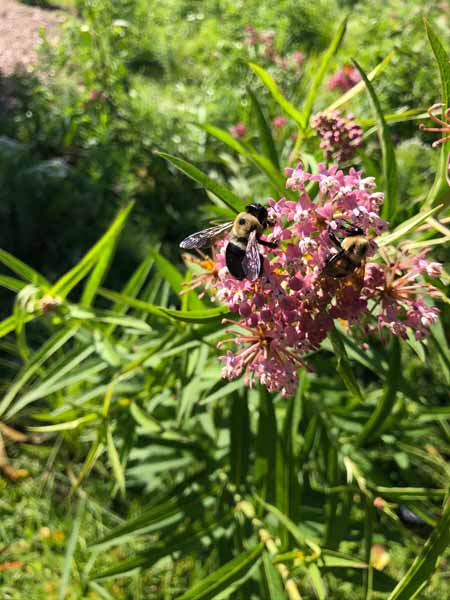
Why Plant Native?
Native plants have deep root systems that enhance soil structure and fertility. These intense root systems grow deep into the soil, creating channels that improve aeration and water infiltration. Additionally, these long roots help native plants avoid the impacts of drought and as the plants decompose, they add organic matter to the soil, further enriching it.
-
Soil Aeration: Deep roots break up compacted soil, allowing air and water to reach deeper layers.
-
Nutrient Cycling: Native plants help recycle nutrients within the soil, making them more available to other plants.
-
Microbial Activity: The presence of native plants supports a diverse community of soil microorganisms that contribute to soil health.
One of the less obvious but incredibly important benefits of native plants is their ability to improve water quality in your local watershed. Their extensive root systems filter runoff from our lawns, trapping pollutants and sediment before they can enter water ways.
-
How They Help:
-
Runoff Reduction: Native plants absorb more rainwater than non-native species, reducing the volume of runoff and decreasing the potential for flooding.
-
Pollutant Filtration: Roots trap and break down pollutants such as fertilizers, pesticides and heavy metals, preventing them from contaminating local water supplies.
-
Erosion Control: By stabilizing the soil, native plants prevent erosion, which can carry sediments and pollutants downstream.
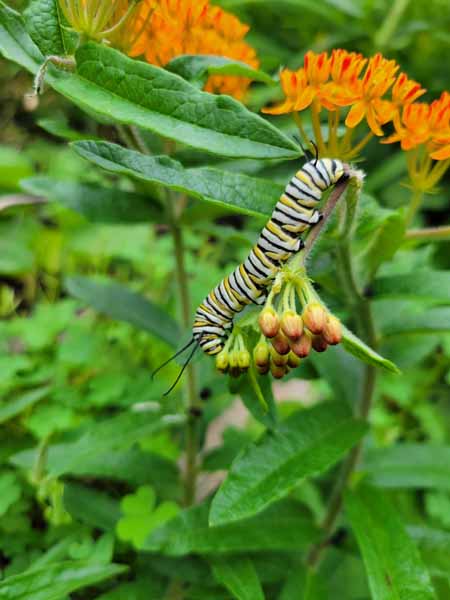
Erosion is a major concern for many landscapes, particularly on slopes and in areas with loose or sandy soil. Native plants are highly effective at preventing erosion thanks again to their robust root systems. By strategically planting natives in erosion-prone areas, you can significantly reduce soil loss and protect your landscaping.
-
Erosion Control Strategies:
-
Ground Covers: Plants like prairie dropseed form dense mats that hold soil in place.
-
Grasses: Native grasses such as big bluestem and little bluestem anchor soil in place with their deep roots.
-
Riparian Buffers: Planting natives along stream banks helps stabilize these areas.
Beyond their ecological benefits, native plants also offer a diverse palette of colors, textures, and forms that can enhance the beauty of your landscape. Their natural beauty provides visual interest and a sense of place that is unique to the Iowa region.
-
Design Tips:
-
Seasonal Interest: Choose a mix of plants that bloom at different times to ensure year-round interest. For example, spring blooming wildflowers like wild columbine can be followed by summer-blooming coneflowers and fall-blooming asters.
-
Diverse Textures: Incorporate plants with varying textures, such as the bold foliage of butterfly milkweed, and the otherworldly structure of rattlesnake master.
-
Natural Groupings: Plant in drifts or clusters to mimic natural plant communities and create a more cohesive and visually appealing design.
Biodiversity is critical for ecosystem health and resilience. Native plants support a wide range of wildlife, from insects and birds to mammals and amphibians. By planting natives, you contribute to the preservation and enhancement of local biodiversity.
- Habitat Creation: Native plants provide food, shelter and breeding sites for various wildlife. For instance, oak trees support hundreds of species of insects and birds.
-
Food Sources: Berry-producing shrubs like serviceberry and elderberry offer food for birds and small mammals.
-
Cover and Nesting Sites: Dense shrubs and grasses offer cover and nesting sites for birds and other animals.
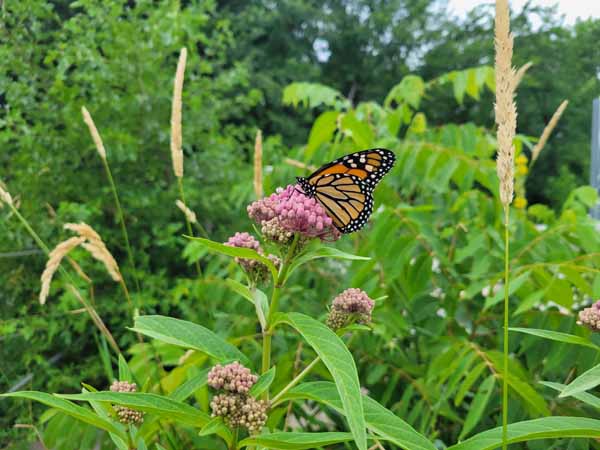
How to Incorporate Iowa Native Plant Species into Your Landscape
Before selecting plants, take note of your site conditions, including soil type, sunlight and moisture levels. This will help you choose species that are best suited to your specific environment. For example, if your site is mostly shaded throughout the day, you will want to choose shade-tolerant species to plant in your project.
You also may consider how you want your landscape to look and function. Sketch out a plan that includes different plant grouping and arrangements based on their height and color. Choose a variety of native species that will provide year-round interest and benefits. You want to aim for a balanced mix of grasses, shrubs and trees (depending on the amount of space) to create a layered and diverse area.
To prepare your site for planting, you need to remove any invasive species and prepare the soil by adding compost if necessary. Native plants generally don’t require much soil preparation, as they are adapted to local conditions already. While native plants are generally low maintenance, they will still benefit from some care, especially during the first year or so of growth. Water the planted area during dry spells, weed regularly, and monitor for pests and diseases.
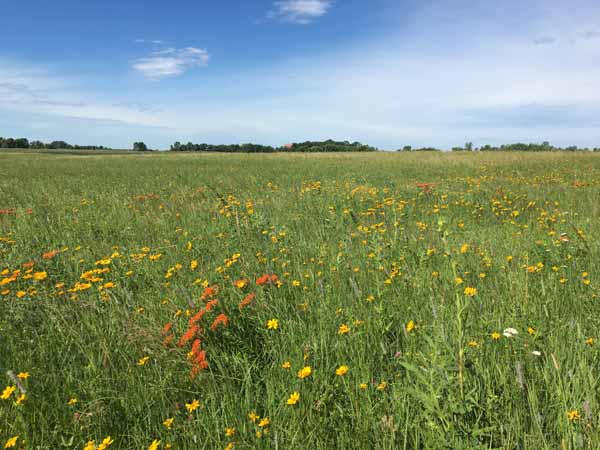
To encourage the use of native plants and sustainable landscaping practices, the City of Des Moines offers a reimbursement program for property owners. This program reimburses 50% of the total cost of qualifying projects, up to a maximum of $2,000. Property owners must apply detailing their project plans and receive approval from the city. This program not only makes it more affordable to create environmentally friendly landscapes but also supports broader ecological goals within the community.
Planting native in your own backyard (or front yard) offers numerous benefits to you and your community’s ecosystem. By taking the time to carefully select and incorporate these plants into your yard, you can enjoy a thriving and resilient environment that makes you proud to be an Iowa resident.
With the #7 Lowest Cost of Living in the U.S. and a Top Metro for Number of Economic Development Projects (among metros with a population of 200,000 to 1 million), Greater Des Moines (DSM) is a region where you can have it all. Learn more about what it’s like to live here.
Lindsey Page
Lindsey Page was born and raised in Greater Des Moines (DSM). She studied at DMACC Ankeny Campus and Iowa State University where she earned a degree in forestry, minoring in animal ecology and focusing on interpretation of natural resources. She is currently a Naturalist with Polk County Conservation.